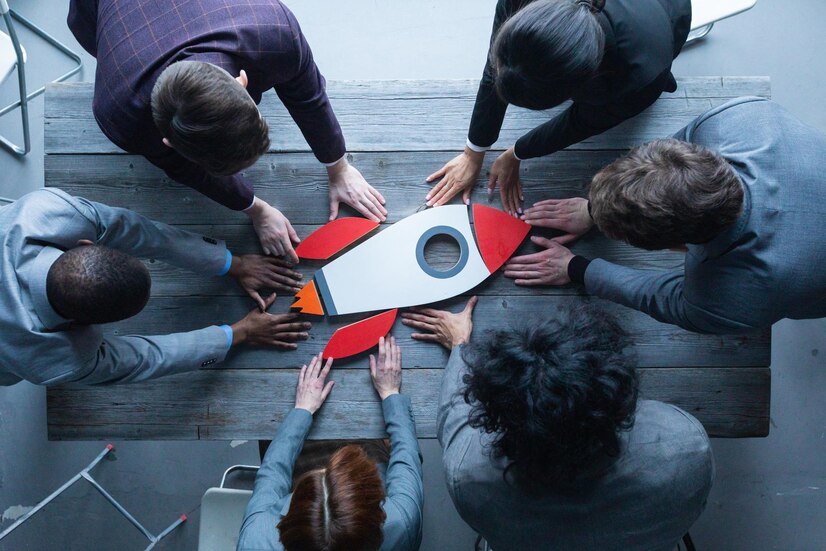In the cutthroat world of entrepreneurship, it is imperative to understand the impact of competition and market saturation on the success or failure of your startup. As you embark on your journey to build and grow your business, it is essential to recognize the potential challenges posed by an oversaturated market and fierce competition. Understanding how these factors can affect your startup’s ability to thrive is crucial in developing effective strategies to mitigate the risks associated with them.
Competition in the marketplace can be both a driving force and a significant obstacle for startups. While healthy competition can foster innovation and drive you to improve your products or services, it can also pose a threat to your market share and profitability. This is especially true in markets that are overcrowded with similar offerings, making it increasingly difficult for your startup to stand out and gain a foothold. Moreover, market saturation can lead to an intense pricing war and erode your profit margins, making it challenging for your business to sustain itself in the long run. Therefore, it is essential to carefully assess the competitive landscape and market saturation before launching your startup, and continuously adapt your business strategies to stay ahead in the game.
Key Takeaways:
- Competition: Intense competition can make it difficult for startups to gain a foothold in the market, as larger companies with established customer bases can overshadow newcomers.
- Market Saturation: When a market is already oversaturated with similar products or services, it can be challenging for startups to differentiate themselves and attract customers.
- Barriers to Entry: High levels of competition and market saturation can create significant barriers to entry for startups, making it difficult for them to break into the market and gain traction.
- Strategic Differentiation: Startups need to focus on developing a unique value proposition to stand out in a competitive and saturated market, and this can require significant investment in marketing and product development.
- Customer Acquisition Costs: In highly competitive markets, startups may face higher customer acquisition costs, as they have to work harder to attract and retain customers in the face of strong competition.
- Risk of Failure: The presence of fierce competition and market saturation increases the risk of failure for startups, as they may struggle to achieve sustainable growth and profitability.
- Need for Innovation: Startups must continually innovate and adapt to remain competitive in saturated markets, as failure to do so can result in becoming obsolete or irrelevant.
Theoretical Framework of Market Competition and Saturation
Now, when exploring the reasons behind why most startups fail, it is crucial to understand the role that competition and market saturation play in the success or failure of a new venture. According to a study by CB Insights, approximately 42% of startups fail because there is no market need for their products or services. This signifies the importance of understanding market dynamics and competition for startups. In this chapter, we will delve into the theoretical framework of market competition and saturation to provide you with a better understanding of these crucial concepts. For further insights, you can also read the article “Why Do Most Startups Fail? Top Reasons for Startup Failure” from Litslink.
Basic Concepts: Competition, Market Saturation, and Startup Ecosystems
In the context of startups, competition refers to the presence of other businesses offering similar products or services within the same target market. Market saturation occurs when a specific market is already adequately supplied with a particular product or service, making it difficult for new entrants to gain a foothold. The startup ecosystem encompasses the environment in which startups operate, including investors, support networks, and regulatory frameworks. Understanding these concepts is essential for identifying potential challenges and opportunities in the market landscape.
Models of Competition: Perfect Competition, Monopolistic Competition, Oligopoly, and Monopoly
When it comes to competition, there are different models that can help you understand the dynamics of the market. Perfect competition is characterized by numerous small firms producing homogeneous products, whereas monopolistic competition involves many firms competing with similar but differentiated products. Oligopoly and monopoly represent scenarios with a small number of dominant firms in the market, leading to different competitive dynamics. Each model has its own implications for startups, influencing factors such as pricing strategies and market entry barriers.
Saturation Dynamics: Identifying Saturated Markets
Identifying saturated markets is crucial for startups, as entering a saturated market can significantly increase the challenges of gaining market share and achieving profitability. Saturation dynamics include understanding demand and supply factors, competitive intensity, and potential barriers to entry. Recognizing early signs of market saturation can help you make informed decisions about market entry or strategic pivots to avoid potential pitfalls. Understanding these dynamics will allow you to navigate the market landscape more effectively and position your startup for success.

Competition as a Double-Edged Sword
For startups, competition can be a double-edged sword. On one hand, it can drive innovation, improve products and services, and ultimately benefit the consumer. On the other hand, intense competition can lead to market saturation, price wars, and the struggle to differentiate your business from others in the same industry. Understanding the role of competition in the success or failure of startups is crucial for entrepreneurs looking to navigate the challenges of the market.
Benefits of Competition for Startups
Competition can push you to constantly improve your offerings, innovate, and find new ways to stand out in a crowded market. It forces you to be strategic about your business and make decisions that will set you apart from your competitors. Additionally, competition can drive down prices, making products and services more affordable for consumers. This can lead to an increase in demand, ultimately benefiting your bottom line. Furthermore, competition can help you build a strong brand, as you work hard to differentiate yourself and create a unique value proposition that resonates with your target audience.
Risks of Intense Competition for Startups
While competition can have its benefits, it also comes with risks for startups. Intense competition can lead to market saturation, making it increasingly difficult for new businesses to break into the industry. This can result in a struggle for market share, as well as downward pressure on prices, potentially impacting your profitability. Competing in a crowded market also means that you have to work harder to attract and retain customers, as they have more options to choose from. Additionally, heavy competition can lead to a focus on short-term gains over long-term sustainability, as businesses may be more inclined to make decisions solely based on staying ahead of their competition rather than what is best for the overall health of their company.
Now, you can include the next chapter after this.
The Impact of Market Saturation on New Ventures
Your new venture is likely to face significant challenges in a market that is already saturated with competitors. Market saturation occurs when the demand for a product or service has been met by the supply available, resulting in fierce competition for market share. This can be a major obstacle for startups, as it can be difficult to carve out a niche and attract customers in a crowded market.
Recognizing Saturation in Various Industry Sectors
Recognizing market saturation in your industry sector is crucial for the success of your startup. Look for signs such as slow or declining sales growth, intense price competition, and high customer turnover. In some cases, the market may be oversaturated with similar products or services, making it difficult to differentiate your offering. In other cases, technological advancements may have rendered existing products or services obsolete, creating a need for innovation and differentiation to survive.
Strategies for Startups in Saturated Markets
To succeed in a saturated market, you need to adopt strategic approaches to stand out from the competition. One effective strategy is to focus on niche marketing, targeting a specific segment of the market with unique needs or preferences that are not well served by existing competitors. By catering to a specific niche, you can differentiate your offering and build a loyal customer base.
Another effective approach is to emphasize innovation and differentiation. Identify areas where the existing products or services are lacking and find ways to improve upon them. This could involve incorporating new technology, offering additional features or benefits, or redesigning the product or service to better meet customer needs. By offering something truly unique, you can attract customers away from the competition.
Real-life Cases: Successes and Failures
To truly understand the impact of competition and market saturation on the success or failure of startups, it is essential to look at some real-life examples. By examining both successful and failed startups, you can gain valuable insights into the factors that contribute to their outcomes. In this section, we will delve into specific case studies to provide a comprehensive view of the role competition and market saturation play in shaping the fate of startups.
Analyzing Choices Leading to Success in a Competitive Markets
When facing intense competition in a saturated market, the choices you make as a startup can significantly impact your success. Successful startups in competitive markets have demonstrated the ability to innovate and differentiate themselves from their competitors. By offering unique value propositions and focusing on customer needs, these startups were able to carve out a niche for themselves in the market. Additionally, their agility and willingness to adapt to changing market conditions have been crucial in maintaining their competitive edge. These startups consistently invested in market research and customer feedback, allowing them to stay ahead of the curve and anticipate market trends.
Discerning Factors Contributing to Failures in Saturated Markets
In contrast, startups that failed in saturated markets often fell victim to common pitfalls. Overreliance on outdated business models, lack of innovation, and failure to differentiate themselves from the competition were prevalent factors in their downfall. Additionally, these startups often neglected to truly understand their target audience and failed to adapt to changing consumer preferences. This lack of agility and disregard for market trends ultimately led to their diminished relevance and eventual failure.
- Fierce competition: Facing intense competition in the saturated market, your business may struggle to gain a foothold and stand out among well-established players.
- Lack of differentiation: Failure to differentiate your product or service from competitors can lead to a loss of market share and customer interest.
- Ignoring market trends: Disregarding changes in consumer preferences and market dynamics can leave your business out of touch and irrelevant.
This highlights the importance of staying attuned to the market and continuously evolving to meet customer demands and preferences. By analyzing these case studies, you can gain valuable insights into the critical factors that contribute to the success or failure of startups in competitive, saturated markets.
Tools and Frameworks for Evaluating Market Conditions
Not all startups fail due to competition and market saturation, but it is important to carefully evaluate market conditions before launching a new venture. There are several tools and frameworks available that can help you assess the competitive landscape and make informed decisions about the viability of your business idea. In this chapter, we will explore some of these tools and how they can be used to evaluate market conditions.
Porter’s Five Forces Analysis in the Startup Context
Porter’s Five Forces Analysis is a powerful tool for evaluating the competitive forces at play in a particular industry. This framework helps you assess the threat of new entrants, the bargaining power of suppliers and buyers, the threat of substitute products or services, and the intensity of competitive rivalry. By using Porter’s Five Forces Analysis, you can gain valuable insights into the competitive dynamics of the market and identify areas of opportunity and potential risk. This can help you make more informed decisions about how to position your startup in the market and develop strategies to overcome competitive challenges.
SWOT and PESTLE: Adapting Established Tools for Startup Assessment
Another set of tools that can be valuable for evaluating market conditions are SWOT (Strengths, Weaknesses, Opportunities, Threats) and PESTLE (Political, Economic, Social, Technological, Legal, Environmental) analysis. These frameworks can help you identify the internal strengths and weaknesses of your startup, as well as the external opportunities and threats in the market. By conducting a SWOT and PESTLE analysis, you can gain a comprehensive understanding of the factors influencing your startup’s success and potential challenges. This can help you develop a more robust business strategy and make informed decisions about how to navigate the competitive landscape.
Whether you use Porter’s Five Forces Analysis, SWOT and PESTLE analysis, or a combination of these frameworks, it is important to thoroughly research and analyze market conditions before launching a new startup. By leveraging these tools, you can gain valuable insights into the competitive dynamics of the market and make informed decisions about the viability of your business idea. This can ultimately help you position your startup for success and mitigate potential risks in the market.
Regulatory and Economic Factors Shaping Competition and Market Saturation
For startups, the level of competition and market saturation can be heavily influenced by regulatory and economic factors. These factors can either create a level playing field and encourage innovation or create barriers to entry and stifle competition. Here are some key factors to consider:
- Government regulations: Government regulations can either protect incumbents and limit competition or create opportunities for new entrants by establishing fair competition policies.
- Market structure: Economic factors such as monopolies, oligopolies, or perfect competition can significantly impact the level of competition and market saturation for startups.
- Barriers to entry: Factors such as high start-up costs, access to resources, and legal restrictions can shape the level of competition and market saturation in a specific industry.
Though regulatory and economic factors play a crucial role in shaping competition and market saturation, the interplay of these factors is complex and often varies across different industries and markets.
The Role of Government in Competition
Government plays a critical role in shaping competition through regulatory policies and enforcement. When the government imposes strict regulations, it can create barriers to entry for startups, favoring established companies and limiting competition. On the other hand, when the government ensures fair competition and implements policies that promote innovation, it can create a level playing field for startups to thrive. Understanding the role of government in competition is essential for startups to navigate the regulatory landscape and identify opportunities for growth.
Economic Cycles and Startup Survival Rates
Economic cycles have a significant impact on the survival rates of startups. During economic downturns, startups often face challenges such as reduced access to capital, decreased consumer spending, and increased competition from established companies. However, economic upturns can create favorable conditions for startups, with increased consumer spending and opportunities for growth. Understanding the impact of economic cycles on startup survival rates is crucial for entrepreneurs to make informed decisions and adapt their strategies based on prevailing economic conditions.
![]()
Building a Competitive Strategy for Startups
Keep in mind that the startup environment can be fiercely competitive, and without a solid competitive strategy, your business may struggle to survive. Here are some key elements to consider when developing your competitive strategy to ensure that your startup stands out in the market.
Differentiation and Brand Positioning
When it comes to building a competitive strategy for your startup, differentiation and brand positioning are crucial. You need to consider what sets your product or service apart from the competition and how you can communicate this effectively to your target audience. Your unique selling proposition (USP) should be clearly defined, and your brand positioning should reflect the values and benefits that you offer. This will help you carve out a distinct space in the market and attract the attention of potential customers. Additionally, building a strong brand identity will help you establish trust and loyalty with your target audience, making it more difficult for competitors to replicate your success.
The Role of Marketing and Customer Acquisition
Marketing plays a vital role in the success of any startup, and when it comes to building a competitive strategy, marketing and customer acquisition should be at the forefront of your efforts. Effective marketing will help you reach and engage with your target audience, while customer acquisition strategies will enable you to grow your customer base. It’s essential to utilize a mix of digital marketing, content marketing, social media, and other channels to increase your brand visibility and attract potential customers. Moreover, focusing on customer acquisition through discounts, loyalty programs, or referral incentives can help you build a loyal customer base and maintain a competitive edge in the market.
Navigating Saturation: Growth, Scaling, and Market Penetration Techniques
Despite the challenges presented by a saturated market, there are strategies you can employ to navigate through this competitive landscape and ensure the growth and success of your startup. Adopting the right growth, scaling, and market penetration techniques is crucial in carving out a space for your business amidst fierce competition.
Expansion into New Markets
One way to navigate market saturation is by expanding into new markets. This could involve targeting a different geographical area or demographic group that may not be as heavily saturated. Conduct thorough market research to identify potential opportunities for expansion. Entering new markets allows you to tap into fresh customer bases and potentially gain a competitive edge over established players in the industry. However, it’s essential to carefully assess the new market’s viability and adapt your products or services to meet the specific needs and preferences of the new customer segment. This may require adjustments to your marketing strategies, pricing models, and distribution channels.
Product Diversification and Service Innovation
Another strategy for navigating market saturation is through product diversification and service innovation. By offering a diverse range of products or introducing innovative services, you can differentiate your startup from competitors and appeal to a wider audience. This may involve conducting thorough market research to identify unmet consumer needs or pain points, and then developing new offerings to address these gaps. Service innovation, on the other hand, involves finding new and creative ways to deliver value to your customers, such as improvements in customer experience, convenience, or efficiency. Embracing technological advancements and staying ahead of industry trends can also set your startup apart from the competition.
The Future Landscape for Startups Amidst Competition and Saturation
After examining the current challenges that startups face in a highly competitive and saturated market, it is important to consider the future landscape for emerging entrepreneurs. Despite the obstacles, there are opportunities for startups to thrive and succeed in this environment. By understanding the evolving startup ecosystem and implementing adaptation techniques, you can position your startup for success in the face of competition and saturation.
Trends and Predictions: The Evolving Startup Ecosystem
As the startup landscape continues to evolve, it is crucial to stay updated on the latest trends and predictions. One key trend is the rise of niche markets and specialized products or services. Identifying a unique niche and catering to specific customer needs can give your startup a competitive edge in a saturated market. Additionally, the increasing focus on sustainability and social responsibility presents opportunities for startups to differentiate themselves and attract socially conscious consumers. It is essential to keep an eye on these emerging trends and align your startup’s strategies accordingly.
Staying Agile: Adaptation Techniques for Emerging Entrepreneurs
Adaptability is a critical factor for the success of startups amidst competition and market saturation. Embracing a lean startup methodology can help you stay agile and responsive to market changes. This involves testing and iterating on your ideas quickly, minimizing wasted resources, and adapting to customer feedback. By maintaining a flexible mindset and being open to pivoting your business model as needed, you can navigate the challenges of competition and saturation.

Conclusion
Presently, the role of competition and market saturation cannot be overlooked when considering the factors that contribute to the failure of startups. These factors can have a significant impact on the success of a new venture, and it is important to understand how they can impact your business. Competition can be fierce, and if you are unable to differentiate your product or service from others in the market, you may struggle to attract customers and generate revenue.
Market saturation can also pose a significant challenge for startups. If you enter a market that is already flooded with similar products or services, it can be difficult to carve out a niche for yourself and gain a foothold in the industry. This can limit your growth potential and make it difficult to generate the revenue needed to sustain your business.
It is important to carefully assess the competitive landscape and market saturation before launching a startup. By understanding these factors and taking steps to mitigate their impact on your business, you can increase your chances of success and position your startup for long-term growth. Remember that competition and market saturation are inevitable in any industry, but by carefully evaluating the landscape and adapting your strategy accordingly, you can navigate these challenges and build a successful startup.
FAQ
Q: What role does competition and market saturation play in the failure of startups?
A: Competition and market saturation can have a significant impact on the failure of startups. Competition can make it difficult for a new company to gain market share, while market saturation can limit the potential customer base. These factors can make it challenging for startups to differentiate themselves and gain a foothold in the market.
Q: How does competition affect the success of startups?
A: Intense competition can make it hard for startups to stand out and attract customers. Larger, established companies may have greater resources and brand recognition, making it difficult for new companies to compete effectively. This can lead to limited growth and ultimately failure for startups.
Q: What are the challenges of entering a saturated market?
A: Saturated markets present challenges for startups as they face stiff competition from existing players. It can be hard to gain visibility and attract customers in a crowded marketplace. Additionally, customer loyalty to established brands can make it difficult for new entrants to capture market share.
Q: How can startups navigate competition and market saturation?
A: Startups can navigate competition and market saturation by finding a niche or untapped segment within the market. This allows them to differentiate themselves and target a specific customer base. Additionally, offering unique value propositions and innovative solutions can help startups carve out a space for themselves in the market.
Q: What are the risks of ignoring competition and market saturation?
A: Ignoring competition and market saturation can lead to limited growth and ultimately the failure of a startup. Without acknowledging these factors, startups may struggle to gain traction and attract customers, leading to financial strain and eventual closure.
Q: How can startups adapt to changing market conditions?
A: Startups can adapt to changing market conditions by staying agile and responsive to industry trends. This may involve pivoting their business model, refining their value proposition, or targeting new customer segments. Staying attuned to market dynamics allows startups to remain competitive and resilient in the face of challenges.
Q: What strategies can startups employ to differentiate themselves in a crowded market?
A: Startups can differentiate themselves in a crowded market by focusing on innovation, superior customer service, and unique branding. By offering something distinctive and valuable, startups can capture the attention of consumers and carve out their own space within the market.










